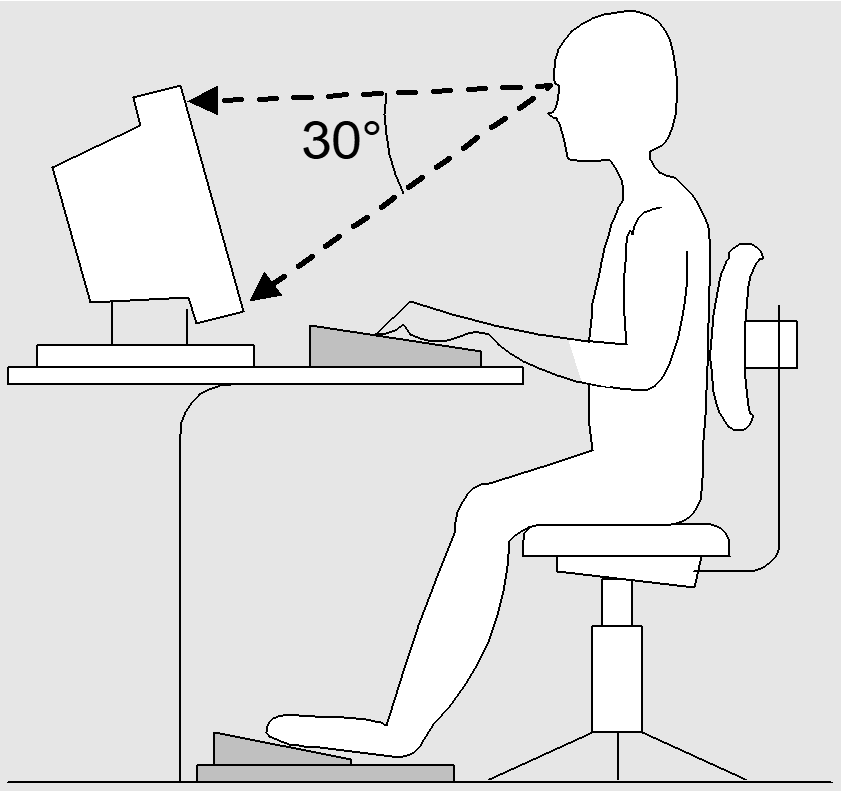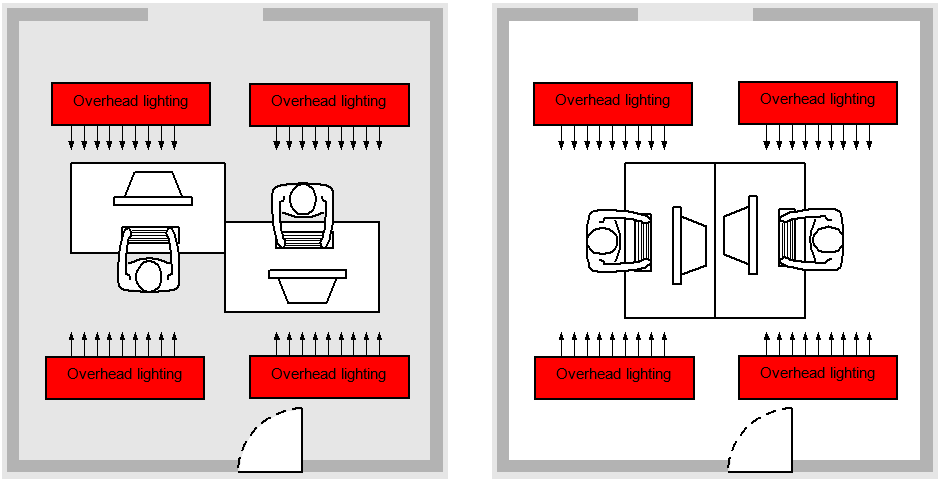To enable standardized and comfortable testing with the VTS, the workstations used for testing should be ergonomically set up. This ensures that all test takers have the same conditions to perform at their best during testing.
Desk and chair
The table and seat height should be adjusted to suit each test taker and set up so that they can work in an upright position. The viewing angle of the screen should be approximately positioned at 30 degrees. The foot-operated keys and foot pedals must be positioned so they can be operated from a normal sitting position.

Light
The workplace should have natural daylight and sufficient and adequate lighting. The lighting should be set up to create and ensure a balanced contrast between the screen and the rest of the work area.
The screen should be positioned so that the line of sight is parallel to the window. The lighting should not be reflected in the screen and should not cause glare. If the ideal position for the screen is not possible due to spatial constraints, other suitable measures must be taken to prevent glare and reflections.

Noise
The testing must not be disturbed by noise. Taking into account external noise, a noise level of 50 dB(A) must not be exceeded.
Temperature
The room temperature at the workstations must be between 19° and 25° C. The air speed must not be more than 0.1 m/s. The air humidity should be between 30% and 70% or between 40% and 70% if air conditioning is used.
Breaks
The test administrator is responsible for deciding on the timing of breaks; this should take account of test taker’s needs. In test batteries breaks can be inserted between individual tests using the PAUSE program module.